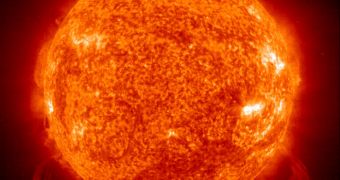As we also informed you a few days ago, the European Space Agency (ESA) has selected two new, medium-class missions for further development. One of them is the Solar Orbiter, and NASA said yesterday, October 6, will be responsible for constructing two of its science instruments.
The thing that will set this new mission apart from others like is the fact that it will orbit the Sun much closer than any other spacecraft that came before it. What this implies is that its technology level and observational capabilities will also be more advanced than anything ever built.
ESA officials announced when they made the selection that the point of closest approach between the Solar Orbiter and the star will be about 21 million miles (33.7 million kilometers). This means that the spacecraft will be located close to the orbit Mercury takes to the Sun.
One of the reasons why European experts wanted the orbiter so close to its target is that this will enable the Solar Orbiter to conduct more in-depth scientific observations of its targets, detecting when a solar flare or coronal mass ejection (CME) occurs early on.
In other words, physicists hope to be able to determine space weather in more detail than ever before. High-energy particles released from the solar surface during such events can have adverse consequences if they hit our planet and catch us off-guard.
Some of the most common problems include damaging transformers and power grids, but the solar emissions can also disrupt communications, fry satellites, and endanger the lives of the six-astronaut crew aboard the International Space Station (ISS).
“Solar Orbiter is an exciting mission that will improve our understanding of the sun and its environment,” says the director of the NASA Heliophysics Division at the agency's Headquarters, Barbara Giles.
“This collaboration will create a new chapter in heliophysics research and continue a strong partnership with the international science community to complement future robotic and human exploration activities,” the official goes on to say.
One of the two instruments NASA will build is called the Solar Orbiter Heliospheric Imager (SoloHI). Its principal investigator will be Naval Research Laboratory expert Russel Howard, and its main mission to detect and analyze CME with extreme accuracy.
The second one is the Heavy Ion Sensor (HIS), whose main mission will be to study multiple aspects of the solar wind. San Antonio-based Southwest Research Institute (SwRI) expert Stefano Livi will be the principal investigator for this instrument.
NASA will spend about $80 million on both these instruments, and will also provide the yet-undecided rocket that will launch the Solar Orbiter into space in 2017. The mission will take off from the Cape Canaveral Air Force Station (CCAFS), in Florida.

 14 DAY TRIAL //
14 DAY TRIAL //